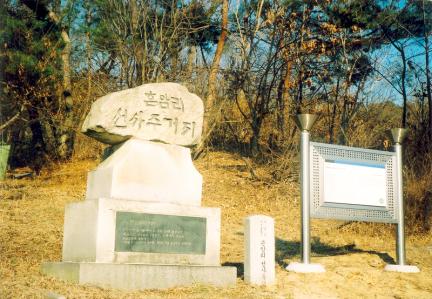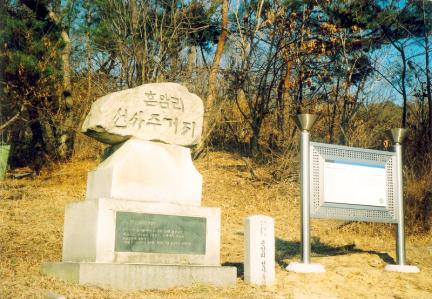국가유산 검색
경기도 기념물
여주흔암리선사유적 (驪州欣岩里先史遺蹟)Archaeological Site of Heunam-ri, Yeoju
| 분 류 | 유적건조물 / 유물산포지유적산포지 / 유적분포지 |
|---|---|
| 수량/면적 | 일원 |
| 지정(등록)일 | 1995.08.07 |
| 소 재 지 | 경기도 여주시 점동면 흔암리 산2-1번지 |
| 소유자(소유단체) | 국가 |
| 관리자(관리단체) | 여주시 |


경기도 기념물
여주흔암리선사유적 (驪州欣岩里先史遺蹟)Archaeological Site of Heunam-ri, Yeoju
| 분 류 | 유적건조물 / 유물산포지유적산포지 / 유적분포지 |
|---|---|
| 수량/면적 | 일원 |
| 지정(등록)일 | 1995.08.07 |
| 소 재 지 | 경기도 여주시 점동면 흔암리 산2-1번지 |
| 소유자(소유단체) | 국가 |
| 관리자(관리단체) | 여주시 |

ⓒ 2000. KOREA HERITAGE SERVICE. ALL RIGHTS RESERVED.



 국가유산
국가유산


